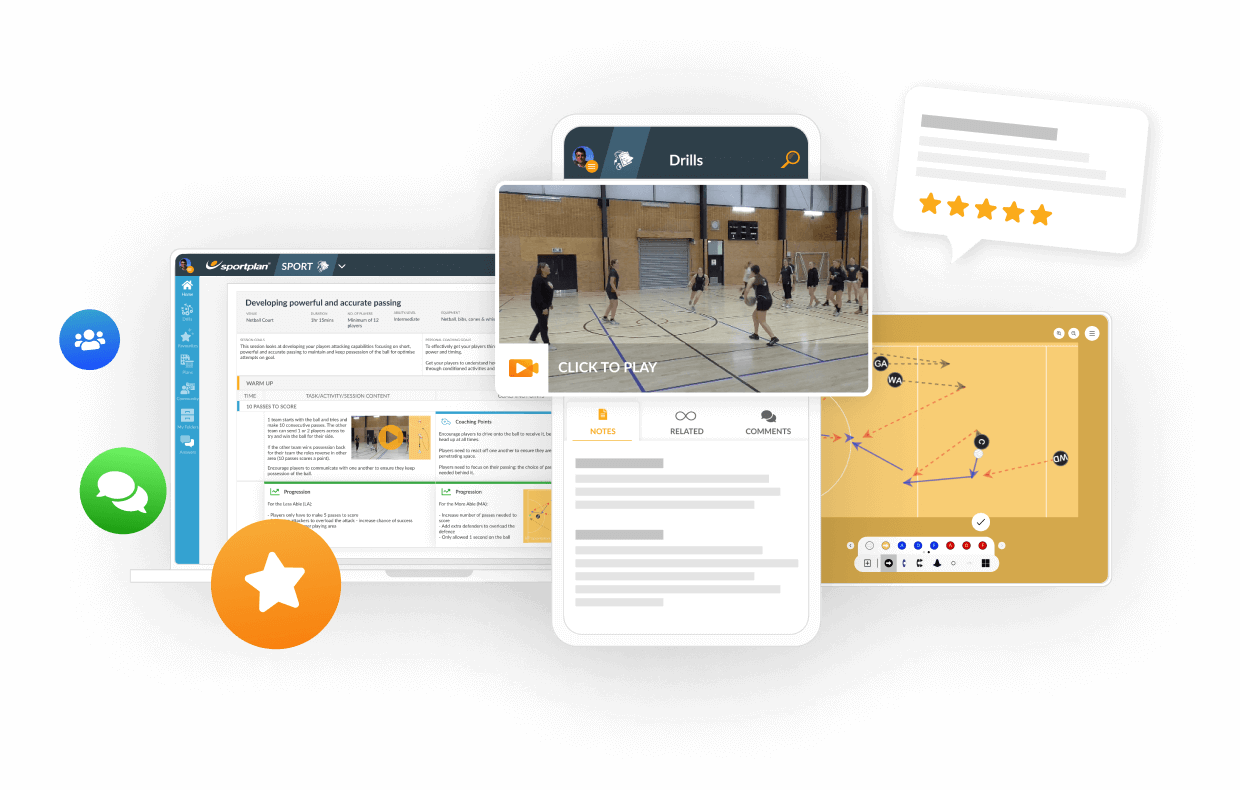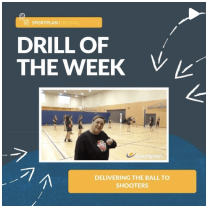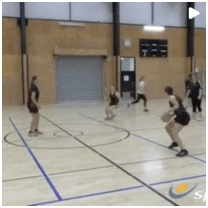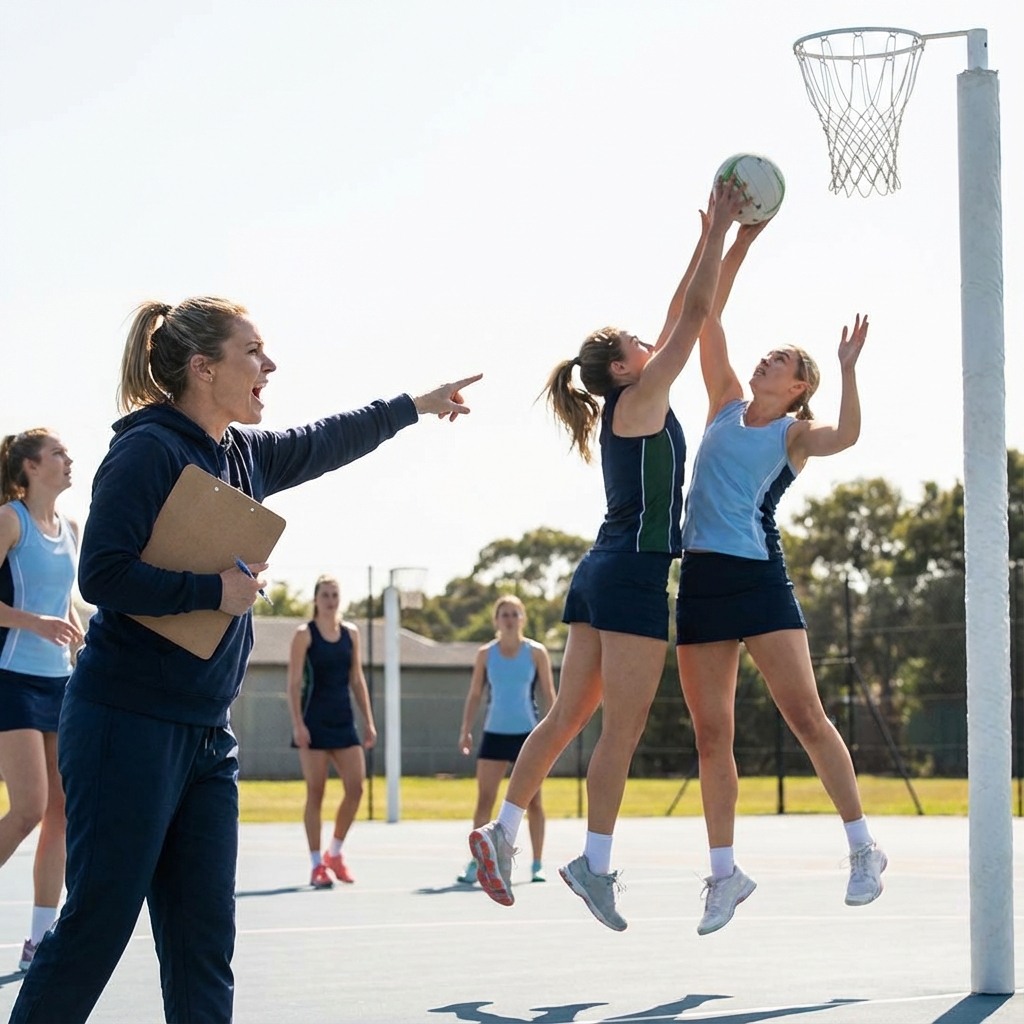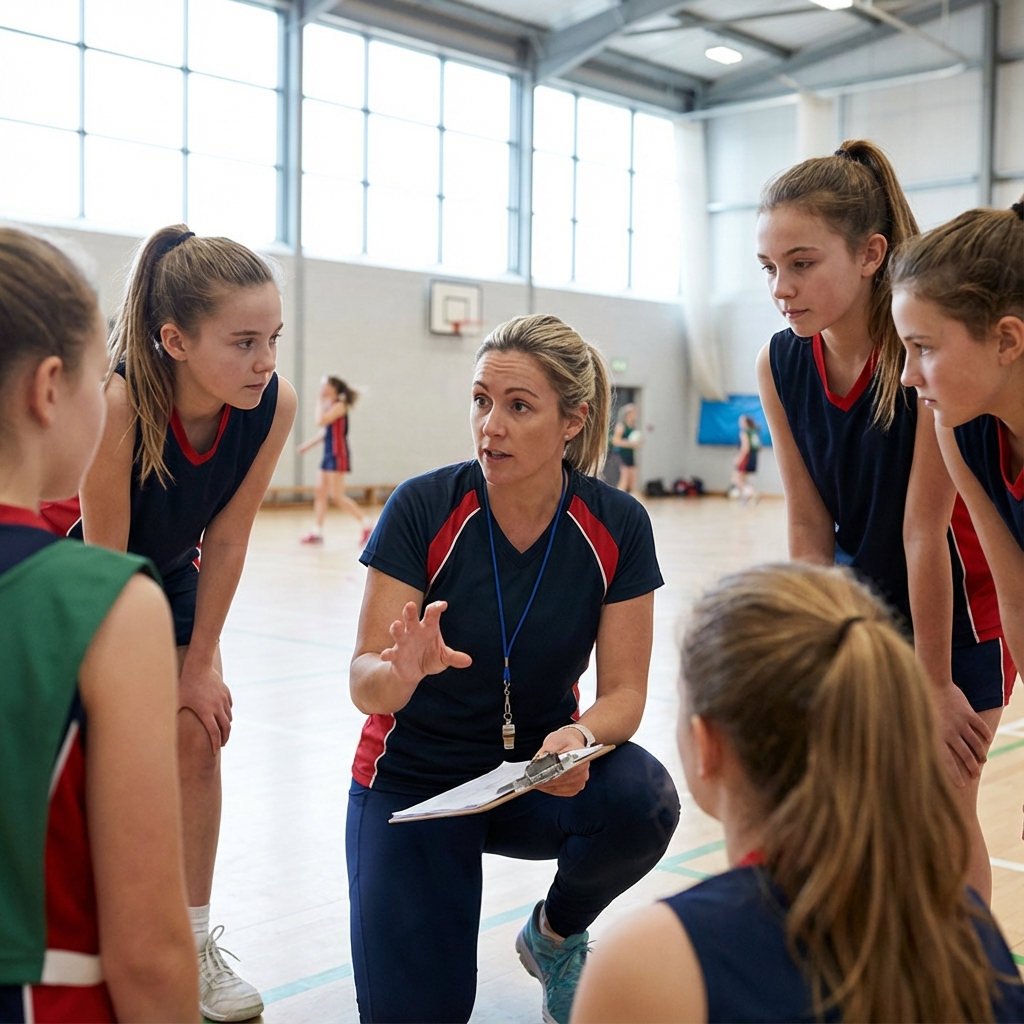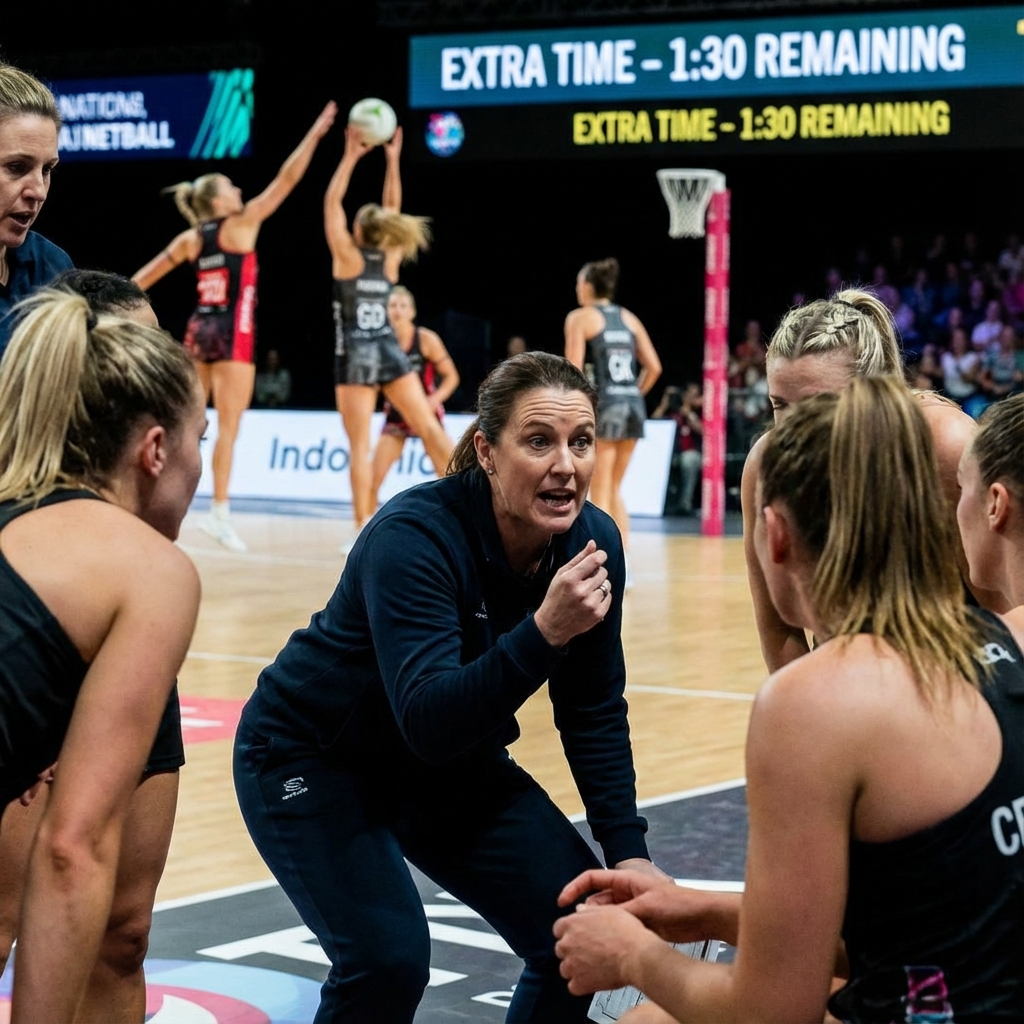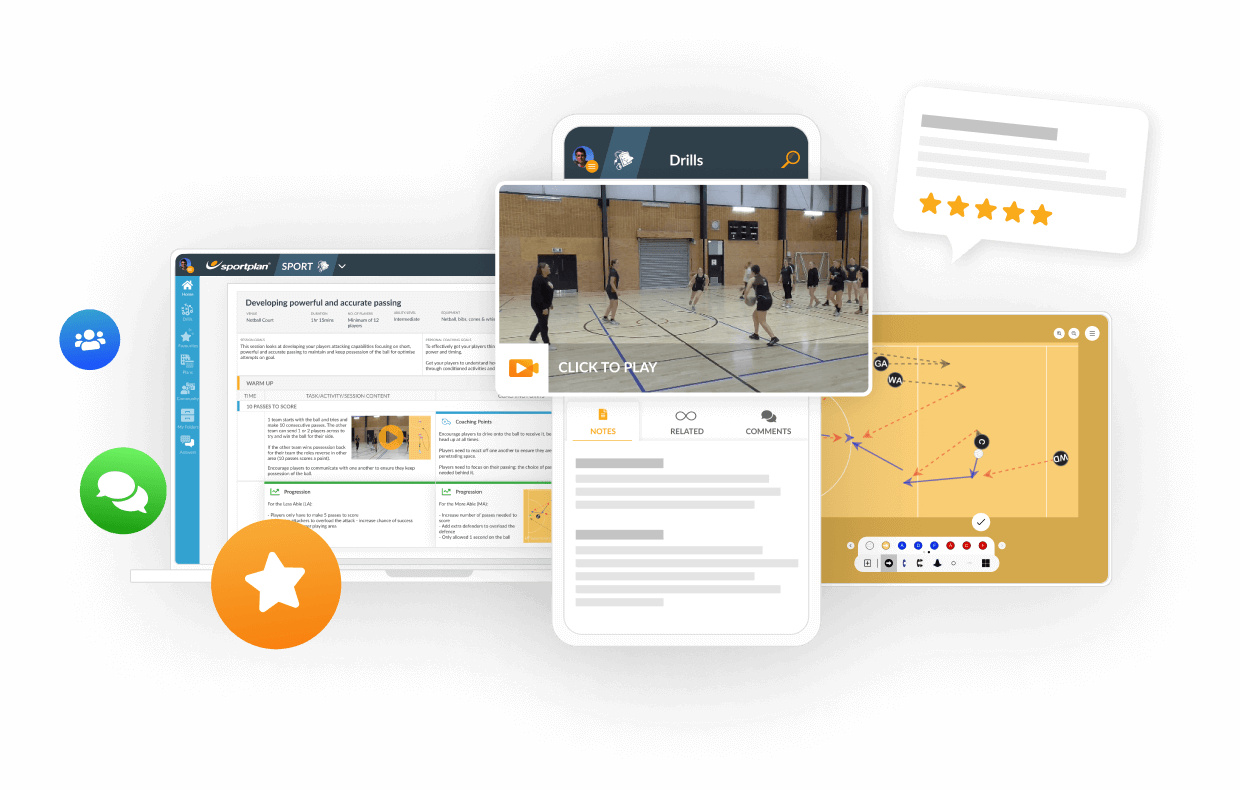Help to slow down-Hot Potato!
I organise a ladies netball group of varying abilities but mostly beginners. Despite constantly telling them to slow their play down, they are determined to pass the pall on as soon as its in their hands often resulting in sloppy passing. Any suggestions on how to slow the pace down and hopefully, improve their passing?





Hi Michelle,
I would place certain conditions on the game to make sure your players slow down. I have provided 2 examples below:
1) You must hold the ball for 2 seconds before passing - this will get your players not only holding on to the ball for longer, but it will also allow the ball carrier to assess their best option and you are more likely to stay in possession. Furthermore, the rest of the team will need to adapt to this and time their movements, reading off each other. If the a player does not hold the ball for a minimum of 2 seconds before passing the ball will be given to the other team as a free pass from where that player was standing. As I am sure your team are competitive and would not like to give up possession of the ball, they will soon start remembering to hold on to the ball for slightly longer.
2) You cannot pass to the first option you see - this will ensure your players hold on to the ball for longer, as often players will pass to the first person they see - of which seems to be the case with your players. By making them wait for a second option, it will not only make your players hold onto the ball for longer, but also make the other players work harder and ensure there are always 2 offers for the ball carrier and these are timed correctly. The ball carrier will be able to see their best option and maintain possession, whilst also allowing your team to recognise and get use to providing 2 offers for the ball. However you must ensure, that the player who offers first for the ball and is not used clears out to provide space for another offer.
In regards to passing, improvement is very much focused around practice. If you have enough time before every session you can get your players to complete a small ball and wall programme, of which they can also practice at home - if you do not have enough balls, get the players into pairs. An example of a ball and wall programme is below:
- 20 Chest passes - Right foot forward
- 20 Chest passes - Left foot forward
- 15 Shoulder passes - Right hand
- 15 Shoulder passes - Left hand
- 15 Overhead passes
- 15 Bounce passes - Right foot forward
- 15 Bounce passes - Left foot forward
This is a very simple ball and wall programme that covers all of the main passes in netball. As your players are mostly beginners do not set a time restriction on it, ask for quality - ensuring they hit the same brick each time, or that pass does not count. As your players get better, you can begin to put a time constraint on, for example as fast as possible to bring in an element of competition - however if the passing goes sloppy, take a step back and ensure quality.
For more advanced athletes you can change your ball and wall programme to make it more challenging - including passes such as the step release or step around the defender.
With these few ideas I am sure your team will be flying in no time!
Hope this helps.
Hi Michelle,
I would place certain conditions on the game to make sure your players slow down. I have provided 2 examples below:
1) You must hold the ball for 2 seconds before passing - this will get your players not only holding on to the ball for longer, but it will also allow the ball carrier to assess their best option and you are more likely to stay in possession. Furthermore, the rest of the team will need to adapt to this and time their movements, reading off each other. If the a player does not hold the ball for a minimum of 2 seconds before passing the ball will be given to the other team as a free pass from where that player was standing. As I am sure your team are competitive and would not like to give up possession of the ball, they will soon start remembering to hold on to the ball for slightly longer.
2) You cannot pass to the first option you see - this will ensure your players hold on to the ball for longer, as often players will pass to the first person they see - of which seems to be the case with your players. By making them wait for a second option, it will not only make your players hold onto the ball for longer, but also make the other players work harder and ensure there are always 2 offers for the ball carrier and these are timed correctly. The ball carrier will be able to see their best option and maintain possession, whilst also allowing your team to recognise and get use to providing 2 offers for the ball. However you must ensure, that the player who offers first for the ball and is not used clears out to provide space for another offer.
In regards to passing, improvement is very much focused around practice. If you have enough time before every session you can get your players to complete a small ball and wall programme, of which they can also practice at home - if you do not have enough balls, get the players into pairs. An example of a ball and wall programme is below:
- 20 Chest passes - Right foot forward
- 20 Chest passes - Left foot forward
- 15 Shoulder passes - Right hand
- 15 Shoulder passes - Left hand
- 15 Overhead passes
- 15 Bounce passes - Right foot forward
- 15 Bounce passes - Left foot forward
This is a very simple ball and wall programme that covers all of the main passes in netball. As your players are mostly beginners do not set a time restriction on it, ask for quality - ensuring they hit the same brick each time, or that pass does not count. As your players get better, you can begin to put a time constraint on, for example as fast as possible to bring in an element of competition - however if the passing goes sloppy, take a step back and ensure quality.
For more advanced athletes you can change your ball and wall programme to make it more challenging - including passes such as the step release or step around the defender.
With these few ideas I am sure your team will be flying in no time!
Hope this helps.
Thank you! Much appreciated!







